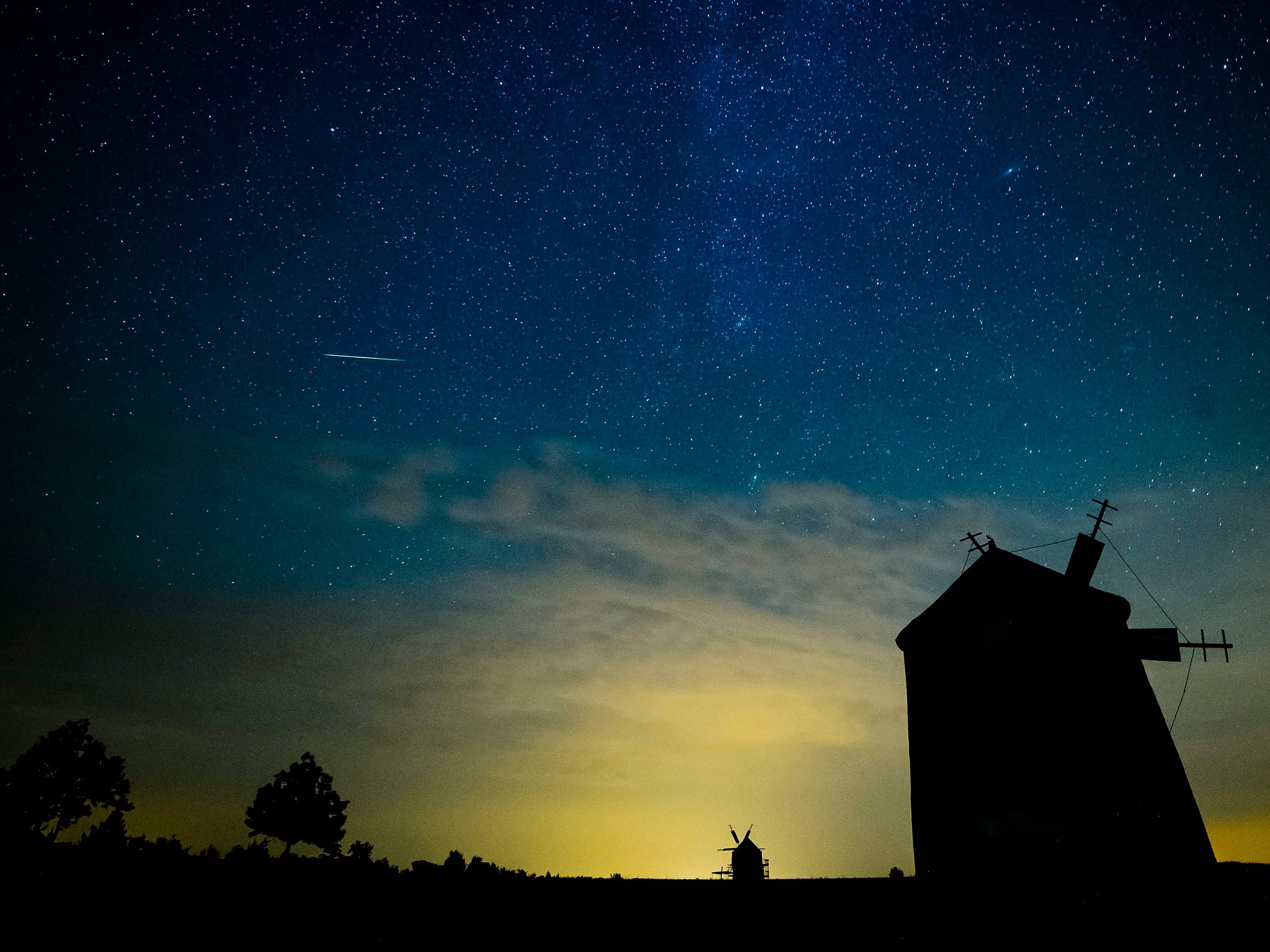Perseid meteor shower about to begin, as Earth flies through stunning trail of space debris
Jupiter has moved us closer to the all-important trail – and we're going to be pelted with far more stunning space dust than normal

The sky is about to get its most dazzling display of the year, as the Earth flies through a cloud of space debris.
The Perseid meteors will peak on Friday, when astronomers have encouraged people to head out and see what is set to be an even more spectacular show than usual.
The shooting stars will be visible through the week. But on Friday there’ll be more than 80 stars visible per hour, with the Perseids reaching the high point of their 12-year cycle this year.
Though the bright lights will look stunning from the Earth, they are made from the most humble things. Each meteor is just a tiny particle left behind by the comet Swift-Tuttle – most smaller than a grain of sand – that burn up as they hit the Earth’s atmosphere.
This year’s extra activity will be a result of the fact that Jupiter has moved that debris so that more of it is in the way of the Earth.
Robin Scagell, vice-president of the Society for Popular Astronomy, said: "They're not going to be falling out of the sky like snowflakes, but it will be worth going out and having a look.
"Every 12 years the Perseids are slightly stronger and this year you could expect to see about 80 an hour under the best conditions, or more probably one a minute.
"Usually the Perseids are fairly dependable. There might be some long gaps and then you'll see two or three at once.
"They're fairly swift and dash across the sky quite quickly leaving trains behind them."

Seen from the UK, the meteors are due to reach their maximum level at around lunchtime on Friday. The best times to see them are during the hours of darkness between Thursday and Saturday, said Mr Scagell.
They appear to emerge from a "radiant" point in the vicinity of the constellation Perseus in the north east but it is best to look away from that direction or they will vanish overhead too fast.
Quoted on the website Space.com, Nasa meteor expert Bill Cooke said a Perseid "outburst" this year could result in 150 to 200 of the shooting stars per hour.
This is over-optimistic, according to Mr Scagell, who said 80 per hour would be a good tally.
Additional reporting by agencies
Join our commenting forum
Join thought-provoking conversations, follow other Independent readers and see their replies
Comments
Bookmark popover
Removed from bookmarks